MOMENTUM UPDATE
![]()
FROM THE DESK OF DR. MICHAEL JOHNS
CHIEF EXECUTIVE OFFICER OF THE
ROBERT W. WOODRUFF HEALTH SCIENCES CENTER

March 2007
Save the Date: Realizing the Vision
Mark your calendars for Wednesday, May 30, at 4:30 p.m. in the Woodruff Health Sciences Center Administration Building auditorium. Realizing the Vision will be a WHSC-wide gathering in which we will share the latest developments in the WHSC’s Vision 2012 strategic initiatives. At that time we will be able to share a significant amount of information related to facilities planning for Clifton Road and Emory Midtown. I sincerely hope that you will be able to attend this event as each of you in the WHSC plays a vital role in implementing this model for transforming health and healing in the 21st century.
Emory Ranks First in Commercialized Research
 The Association of University Technology Managers ranked Emory first among reporting universities in commercialization revenue for 2005 (the most recent year calculated), with more than $585 million in licensing income. Most of this total derives from income generated from the HIV/AIDS drug Emtriva. In 2005, Emory also created four start-up companies, executed 30 licenses, filed 54 new patent applications, and received issuance of 17 U.S. patents.
The Association of University Technology Managers ranked Emory first among reporting universities in commercialization revenue for 2005 (the most recent year calculated), with more than $585 million in licensing income. Most of this total derives from income generated from the HIV/AIDS drug Emtriva. In 2005, Emory also created four start-up companies, executed 30 licenses, filed 54 new patent applications, and received issuance of 17 U.S. patents.
Over the past 15 years, commercialized Emory research has resulted in revenues of more than $720 million to the University, which by law must be reinvested in research and science education. A large portion of this income is being used to implement relevant components of Emory’s strategic plan, including faculty recruitment, financial aid, and new initiatives in predictive and global health, neurosciences, and computational and life sciences, as well as new space for education and research.
Thus far, Emory’s technology transfer program, under the direction of Todd Sherer (above left), has resulted in 16 licensed therapeutic products already in the marketplace, 38 in various stages of development, and 37 company start-ups. In addition to Emtriva, other products that have been translated from the laboratory to the bedside include diagnostic tests for genetic disorders, a technology to improve angioplasty, and imaging software for diagnosing cardiovascular disease. Products in the pipeline include small-molecule drugs to block cancer metastasis and to prevent brain damage from stroke, and an AIDS vaccine, among others.
This effort overall is crucial in our efforts to create, preserve, teach, and apply knowledge in the service of humanity to help make people healthy.
Woodruff Leadership Academy Featured in AAMC Journal
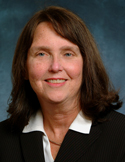 The March issue of Academic Medicine, a journal published by the Association of American Medical Colleges (AAMC), features an article on our Woodruff Leadership Academy (WLA), describing its usefulness in negotiating rapid changes in health care management and in academic medicine as a whole.
The March issue of Academic Medicine, a journal published by the Association of American Medical Colleges (AAMC), features an article on our Woodruff Leadership Academy (WLA), describing its usefulness in negotiating rapid changes in health care management and in academic medicine as a whole.
Currently in its fifth year, the WLA was established to develop a group of leaders from throughout the WHSC who could work together and with senior leadership to implement a shared vision for the WHSC and who could be groundbreakers and ambassadors for the WHSC’s mission and goals. The program to date has included 117 participants from professional roles ranging from clinicians and researchers to fundraisers, educators, communicators, planners, and department/unit administrators.
For a PDF of this Academic Medicine article, please contact author Holly Korschun (above left), 2004 WLA Fellow, at hkorsch@emory.edu. For more information on the WLA, see http://www.whsc.emory.edu/_wla/ and http://www.whsc.emory.edu/_pubs/momentum/2003fall/360.htm.
AAMC’s Fulfilling the Promise Initiative Recognizes Emory Research
Previously in Momentum Update, I mentioned the “Fulfilling the Promise” initiative the Association of American Medical Colleges has undertaken in order to raise awareness of the importance of the NIH funded medical research that occurs at our nation’s medical schools and teaching hospitals. The initiative involves a series of periodic briefings in Washington, each centered on a different medical issue. Emory is an active participant in this effort, submitting numerous examples of the important work that takes place here.
Throughout the “Fulfilling the Promise” initiative, a number of submissions from the WHSC have been highlighted in fact sheets the AAMC releases in connection with the briefings. The subject of the most recent briefing was “The Disease of Addiction: New Strategies for Prevention and Treatment.” Emory submitted numerous examples of innovations and discoveries in this area that have occurred through the work of our talented research community. Once again, several of our submissions were cited by the AAMC. Federal support for medical research is an issue of critical importance. I applaud the excellent work that all of you do in every subject area of research, discovery, and translation, and I am proud that we are able to share examples of your excellence with the greater community.
Emory Again Ranks in Top 10 Best Institutions for Post-docs
Emory was named eighth best institution in the country in this year’s “Best Places to Work for Postdocs” survey conducted by The Scientist magazine, marking the second year in a row that Emory has ranked in the top 10 in this survey. Of the 11 categories covered by the survey, the most important factor was the quality of training and career preparation offered by the institution. Emory employs nearly 600 post-docs in labs in the School of Medicine, Rollins School of Public Health, the Nell Hodgson Woodruff School of Nursing, at Yerkes National Primate Research Center, in the Emory College, and in the Graduate School of Arts and Sciences. These employment opportunities help young PhD life science graduates launch their careers and provide an invaluable resource in advancing research at Emory.
Allen Continues to Fight Spread of HIV in Africa
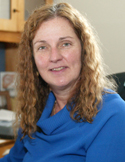 I recently was fortunate enough to visit Dr. Susan Allen and the Rwanda Zambia HIV Research Group (RZHRG) that she founded and directs in Kigali, Rwanda. Dr. Allen, a professor in the Rollins School of Public Health and a member of Emory’s Center for AIDS Research (CFAR), has done a truly magnificent job with the RZHRG which she started in Rwanda in 1986. The RZHRG is now headquartered at the Rollins School of Public Health and employs 15 public health student interns plus a number of local residents. The RZHRG follows the longest-standing and largest heterosexual HIV-discordant couples cohort in the world. This is a remarkable feat especially considering that the upheaval of the Rwandan genocide of 1994 nearly destroyed the original study cohort and took the lives of half of the staff. Despite operating on a shoestring from 1996 to 2001, Dr. Allen continued her work and was awarded a grant in 2001 from the World AIDS Foundation followed by NIH grants in 2002. Dr. Allen’s continued dedication and perseverance on the front lines of HIV and AIDS research in Africa is truly an inspiration. This is one example of our Global Health initiatives at Emory.
I recently was fortunate enough to visit Dr. Susan Allen and the Rwanda Zambia HIV Research Group (RZHRG) that she founded and directs in Kigali, Rwanda. Dr. Allen, a professor in the Rollins School of Public Health and a member of Emory’s Center for AIDS Research (CFAR), has done a truly magnificent job with the RZHRG which she started in Rwanda in 1986. The RZHRG is now headquartered at the Rollins School of Public Health and employs 15 public health student interns plus a number of local residents. The RZHRG follows the longest-standing and largest heterosexual HIV-discordant couples cohort in the world. This is a remarkable feat especially considering that the upheaval of the Rwandan genocide of 1994 nearly destroyed the original study cohort and took the lives of half of the staff. Despite operating on a shoestring from 1996 to 2001, Dr. Allen continued her work and was awarded a grant in 2001 from the World AIDS Foundation followed by NIH grants in 2002. Dr. Allen’s continued dedication and perseverance on the front lines of HIV and AIDS research in Africa is truly an inspiration. This is one example of our Global Health initiatives at Emory.
Teaching Team-Based Design
 Dr. Gerri Lamb, Independence Foundation and Wesley Woods Scholar at the Nell Hodgson Woodruff School of Nursing, collaborated with Emory Healthcare nursing directors June Connor and Dr. Sharlene Toney to demonstrate the importance of a nursing perspective in an interdisciplinary graduate-level course at Georgia Tech called “Patient Room of the Future.” Led by Tech faculty Craig Zimring and Ellen Do, the course incorporated seven disciplines (nursing, architecture, industrial design, health systems, human factors, computing, and engineering), with student teams designing electronic and video systems to enhance communication among patient, family, and health professionals as well as full-size mock-ups of patient rooms.
Dr. Gerri Lamb, Independence Foundation and Wesley Woods Scholar at the Nell Hodgson Woodruff School of Nursing, collaborated with Emory Healthcare nursing directors June Connor and Dr. Sharlene Toney to demonstrate the importance of a nursing perspective in an interdisciplinary graduate-level course at Georgia Tech called “Patient Room of the Future.” Led by Tech faculty Craig Zimring and Ellen Do, the course incorporated seven disciplines (nursing, architecture, industrial design, health systems, human factors, computing, and engineering), with student teams designing electronic and video systems to enhance communication among patient, family, and health professionals as well as full-size mock-ups of patient rooms.
Correll Family Supports School of Medicine Through Funds and Fundraising
 Former Georgia Pacific Chair and CEO Pete Correll and his wife, Ada Lee, have pledged $2.5 million through the Correll Foundation to the School of Medicine to support scholarships, five-year professorships named in their honor, and research and teaching in urology, emergency medicine, and biomedical engineering. The Corrells have given decades of volunteer service to Atlanta and have supported the School of Medicine for a number of years, chairing the school’s 150th anniversary celebration to raise funds for the school’s new building, which opens in May. More recently, they agreed to co-chair the school’s efforts in Emory’s upcoming comprehensive campaign. To read more about their contributions to Emory, see http://www.whsc.emory.edu/_pubs/em/2005spring/just_say_yes.html. We thank Mr. and Mrs. Correll for their ongoing support.
Former Georgia Pacific Chair and CEO Pete Correll and his wife, Ada Lee, have pledged $2.5 million through the Correll Foundation to the School of Medicine to support scholarships, five-year professorships named in their honor, and research and teaching in urology, emergency medicine, and biomedical engineering. The Corrells have given decades of volunteer service to Atlanta and have supported the School of Medicine for a number of years, chairing the school’s 150th anniversary celebration to raise funds for the school’s new building, which opens in May. More recently, they agreed to co-chair the school’s efforts in Emory’s upcoming comprehensive campaign. To read more about their contributions to Emory, see http://www.whsc.emory.edu/_pubs/em/2005spring/just_say_yes.html. We thank Mr. and Mrs. Correll for their ongoing support.
WHSC Communications Office Garners National Awards
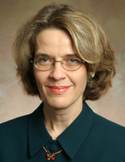 I couldn’t begin to thank everyone in the WHSC Communications office for all that they do each day. They work tirelessly in disseminating WHSC news to the local, national, and international community. They are behind the many excellent publications across the WHSC campus. So I’m proud to say that the Association of American Medical Colleges (AAMC) has recognized Momentum magazine, the quarterly publication of WHSC news, and the one-time publication We’ve Only Just Begun with Awards of Excellence. Momentum and We’ve Only Just Begun, which highlights our road map for transforming health and healing, each won in the publications category of the 2007 AAMC-GIA awards competition. Karon Schindler (above left), 2005 WLA Fellow, of WHSC Communications, will accept the awards on behalf of the WHSC at the annual awards ceremony later this month in Tampa, Florida.
I couldn’t begin to thank everyone in the WHSC Communications office for all that they do each day. They work tirelessly in disseminating WHSC news to the local, national, and international community. They are behind the many excellent publications across the WHSC campus. So I’m proud to say that the Association of American Medical Colleges (AAMC) has recognized Momentum magazine, the quarterly publication of WHSC news, and the one-time publication We’ve Only Just Begun with Awards of Excellence. Momentum and We’ve Only Just Begun, which highlights our road map for transforming health and healing, each won in the publications category of the 2007 AAMC-GIA awards competition. Karon Schindler (above left), 2005 WLA Fellow, of WHSC Communications, will accept the awards on behalf of the WHSC at the annual awards ceremony later this month in Tampa, Florida.
Momentum magazine was also honored with the highest award at the Council for Advancement and Support of Education (CASE) regional competition in the Internal Newsletters and Tabloids category and it will now compete in the CASE national competition.
Five Emory Scientists Named as GCC Scholars
Five of 13 scientists named as Georgia Cancer Coalition (GCC) Distinguished Cancer Scholars for 2007, are from Emory, with each receiving $50,000 to $150,000 per year for five years to support his or her research:
-
Susan Bauer-Wu, DNSc, was recruited from the Dana-Farber Cancer Institute to the Nell Hodgson Woodruff School of Nursing. She studies use of psycho-behavioral interventions, including meditation, music, and writing, to manage the distress caused by cancer symptoms and treatment.
-
Georgia Zhuo Chen, PhD, in the Winship Cancer Institute, studies lymph node metastasis and is investigating genes, proteins, and pathways involved in the metastatic process.
-
Jing Chen, PhD, also in Winship, studies the cause and development of leukemia and melanoma and co-directs experimental therapeutics in leukemia.
-
Edward S. Mocarski Jr., PhD, recently recruited from Stanford, is the Woodruff Professor of Microbiology and Immunology. He is a world authority on cytomegalovirus, a co-inventor on two patents, and widely experienced in integrating clinical and basic research.
-
Harold I. Saavedra, PhD, recently recruited to radiation oncology from Ohio State, is studying how to prevent cancer initiation, detect cancer earlier, and suppress signals that lead to tumor progression.
Since 2001, the GCC has named 91 distinguished scholars, including 36 at Emory.
New Funds and New Recruits in the Emory Transplant Center
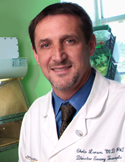 The Emory Transplant Center, one of five clinical areas targeted for WHSC national leadership as part of the overall strategy for Vision 2012, has received a new grant from the Juvenile Diabetes Research Foundation (JDRF) and has recruited two new faculty. Dr. Chris Larsen (left) is the Director of the Emory Transplant Center.
The Emory Transplant Center, one of five clinical areas targeted for WHSC national leadership as part of the overall strategy for Vision 2012, has received a new grant from the Juvenile Diabetes Research Foundation (JDRF) and has recruited two new faculty. Dr. Chris Larsen (left) is the Director of the Emory Transplant Center.
JDRF awarded the center $2.5 million over three years to develop pig islets as an alternative to human islets for transplant into patients with Type 1 diabetes. This research, if successful, could proceed to clinical trials in humans within the next three years. Xenotransplants (between two different animal species) could help narrow the vast gap between the number of islets available for transplant and the millions of people with Type 1 diabetes who could potentially benefit from islet replacement. The JDRF grant will fund development of a nonhuman primate model at Yerkes National Primate Research Center.
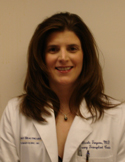 This grant comes on the heels of a $4.1 million grant in 2002 to establish the JDRF Center for Islet Transplantation to address large-scale strategies for islet replacement, which was renewed with a five-year grant of $8.5 million in 2006 with the goal of advancing islet transplant to a mainstream therapy. JDRF also has been a major supporter of the transplant center’s work in development of less toxic immunosuppressant drugs for transplant patients.
This grant comes on the heels of a $4.1 million grant in 2002 to establish the JDRF Center for Islet Transplantation to address large-scale strategies for islet replacement, which was renewed with a five-year grant of $8.5 million in 2006 with the goal of advancing islet transplant to a mainstream therapy. JDRF also has been a major supporter of the transplant center’s work in development of less toxic immunosuppressant drugs for transplant patients.
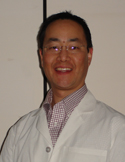 The Emory Transplant Center also has recruited two new faculty, both of whom arrived in January from the University of Massachusetts: Nicole Turgeon (above left) specializes in adult and pediatric kidney transplants, pancreas transplants, laparoscopic living-donor nephrectomy, and issues pertaining to immune response. Neal Iwakoshi (left), a research scientist in immunology and virology, is investigating ways of manipulating protein responses in transplant rejection and in inflammatory and autoimmune diseases.
The Emory Transplant Center also has recruited two new faculty, both of whom arrived in January from the University of Massachusetts: Nicole Turgeon (above left) specializes in adult and pediatric kidney transplants, pancreas transplants, laparoscopic living-donor nephrectomy, and issues pertaining to immune response. Neal Iwakoshi (left), a research scientist in immunology and virology, is investigating ways of manipulating protein responses in transplant rejection and in inflammatory and autoimmune diseases.
Congratulations to Dr. Chris Larsen and his colleagues for these accomplishments and their ongoing success in this center of excellence.
New Center Established for Respiratory Health
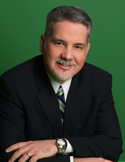
The WHSC has funded establishment of the Emory Center for Respiratory Health, one of five centers of excellence, including transplant, heart and vascular, neuroscience, and cancer, in which we aspire to be national leaders within five years. Dr. Jesse Roman, Division Director in Pulmonary Medicine, is director of the new center. For detailed information about ongoing collaborative work in respiratory care and research, see the most recent cover story entitled “Breathing Room” in Momentum magazine at http://www.whsc.emory.edu/_pubs/momentum/2007winter/fresh_air.html.
New Interim Leadership for IRB
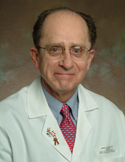 I would like to convey my deepest appreciation on behalf of all of Emory to Dr. James Keller (left), Professor and Clinical Director of Radiation Oncology, for his 11 years of service as chair of the Emory Institutional Review Board (IRB). The IRB group has the responsibility for protecting the rights and welfare of people recruited to participate in clinical trials. Dr. Keller has decided to retire from this leadership position to spend more time with his family. We accept his decision with great reluctance. He has served with dignity, honor, sound judgment - not to mention many countless hours - and his dedication to this critical position has been more than exceptional.
I would like to convey my deepest appreciation on behalf of all of Emory to Dr. James Keller (left), Professor and Clinical Director of Radiation Oncology, for his 11 years of service as chair of the Emory Institutional Review Board (IRB). The IRB group has the responsibility for protecting the rights and welfare of people recruited to participate in clinical trials. Dr. Keller has decided to retire from this leadership position to spend more time with his family. We accept his decision with great reluctance. He has served with dignity, honor, sound judgment - not to mention many countless hours - and his dedication to this critical position has been more than exceptional.
As of April 1, Dr. Colleen DiIorio, Professor of Behavioral Sciences and Health Education in Rollins School of Public Health, will serve as interim IRB chair.
Moving Forward in Global Health
An agreement has been finalized to form a new Center for Global Vaccines in India, based on collaboration between the International Center for Genetic Engineering and Biotechnology in New Delhi and researchers here in the Global Health Institute and in the Emory Vaccine Center. Initial studies will focus on HIV/TB co-infection, which the World Health Organization recently classified as a unique disease. India has the largest number of HIV-infected people in the world, and the majority of those people also have TB, which is endemic in that country. Center researchers hope to develop a therapeutic vaccine that can be given to help those already infected with HIV/TB.
Emory scientists in chemistry, pharmacology, and other departments throughout the University and the WHSC are training African scientists here at Emory in drug discovery to help them establish a viable research infrastructure that is capable of responding to health care needs on their home turf. The visiting scholars will come initially from South Africa, but scientists from all over sub-Saharan Africa will soon take part in the training. The timing for this training is particularly appropriate in light of the fact that several pharmaceutical companies are beginning now to spring up throughout Africa, according to chemistry professor Dennis Liotta, who is helping lead this training effort.
Research Highlights
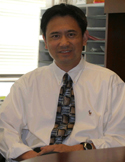 Dr. Xi (Erick) Lin, a researcher in otolaryngology and cell biology, was lead author of a study concluding that a large proportion of genetically caused deafness may be reversible, based on new discoveries in mice. The study was published in Proceedings of the National Academy of Sciences (http://www.pnas.org/cgi/content/full/104/4/1337). He worked with two proteins involved in hearing and showed that when one was missing the other could be increased to restore hearing. As this research picks up momentum, these results—and future findings—could mean big changes for therapeutic strategy in congenital deafness, with a move from exploring gene therapy to development of drugs that could boost one of the missing proteins.
Dr. Xi (Erick) Lin, a researcher in otolaryngology and cell biology, was lead author of a study concluding that a large proportion of genetically caused deafness may be reversible, based on new discoveries in mice. The study was published in Proceedings of the National Academy of Sciences (http://www.pnas.org/cgi/content/full/104/4/1337). He worked with two proteins involved in hearing and showed that when one was missing the other could be increased to restore hearing. As this research picks up momentum, these results—and future findings—could mean big changes for therapeutic strategy in congenital deafness, with a move from exploring gene therapy to development of drugs that could boost one of the missing proteins.
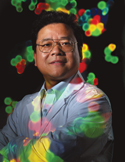 Nanotechnology researcher Shuming Nie and colleagues in the Emory-Georgia Tech Nanotechnology Center have developed an easier means of analyzing liquid such as blood or water for very low concentrations of virus or bioterrorism agents. To do this, they are using optical, magnetic nanoparticles added to micron-sized silica beads. When the beads are mixed in a liquid, viruses, proteins, or other biomarkers are captured on the bead surface. Magnetization of the nanoparticles allows use of a magnetic field for easy removal of the beads from a liquid sample. After the beads are removed, optical imaging is used to determine the concentration of a specific protein or virus. The primary applications of this technology will be to detect cancer and neurologic diseases such as Alzheimer’s by identifying very low concentrations of biomarkers of these diseases in blood or urine.
Nanotechnology researcher Shuming Nie and colleagues in the Emory-Georgia Tech Nanotechnology Center have developed an easier means of analyzing liquid such as blood or water for very low concentrations of virus or bioterrorism agents. To do this, they are using optical, magnetic nanoparticles added to micron-sized silica beads. When the beads are mixed in a liquid, viruses, proteins, or other biomarkers are captured on the bead surface. Magnetization of the nanoparticles allows use of a magnetic field for easy removal of the beads from a liquid sample. After the beads are removed, optical imaging is used to determine the concentration of a specific protein or virus. The primary applications of this technology will be to detect cancer and neurologic diseases such as Alzheimer’s by identifying very low concentrations of biomarkers of these diseases in blood or urine.
Honors and Appointments
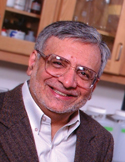 The Faculty of 1000 Biology website has named an article by Emory Vaccine Center scientists and colleagues in the February 9, 2006, issue of Nature as one of the “All-Time Top 10” most interesting scientific papers. The paper, titled “Restoring function in exhausted DC8T cells during chronic viral infection,” was ranked first in immunology in the top 10 list and fourth in “all of biology.” Dr. Rafi Ahmed, Director of the Vaccine Center, was senior author, Dr. Daniel Barber, an Emory graduate student when the article was written, was first author. The article describes a new strategy for boosting immune response to chronic viral infections such as HIV and hepatitis B and C. For more information about this research, see
The Faculty of 1000 Biology website has named an article by Emory Vaccine Center scientists and colleagues in the February 9, 2006, issue of Nature as one of the “All-Time Top 10” most interesting scientific papers. The paper, titled “Restoring function in exhausted DC8T cells during chronic viral infection,” was ranked first in immunology in the top 10 list and fourth in “all of biology.” Dr. Rafi Ahmed, Director of the Vaccine Center, was senior author, Dr. Daniel Barber, an Emory graduate student when the article was written, was first author. The article describes a new strategy for boosting immune response to chronic viral infections such as HIV and hepatitis B and C. For more information about this research, see
http://whsc.emory.edu/press_releases2.cfm?announcement_id_seq=5448.
 Linda Grabbe, instructor in Family and Community Nursing, was one of seven women to receive the University’s Unsung Heroine awards. Grabbe was cited for her work over the past six years at a free clinic for indigent, homeless, and uninsured women and children; for her work as a Peace Corps medical officer in Kazakhstan and as a nurse practitioner in Ivory Coast; and for her volunteer contributions to Stop It Now!, a program to prevent child abuse in Georgia.
Linda Grabbe, instructor in Family and Community Nursing, was one of seven women to receive the University’s Unsung Heroine awards. Grabbe was cited for her work over the past six years at a free clinic for indigent, homeless, and uninsured women and children; for her work as a Peace Corps medical officer in Kazakhstan and as a nurse practitioner in Ivory Coast; and for her volunteer contributions to Stop It Now!, a program to prevent child abuse in Georgia.
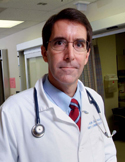 Dr. Arthur Kellermann has been named Associate Dean for Public Policy in the School of Medicine. In this new role, he will work with Dean Thomas Lawley and other executive leadership in the medical school in coordinating and managing the school’s strategic reactive response and proactive planning on matters of academic, research, and clinical public policy. Currently on sabbatical as a Robert Wood Johnson health policy fellow, Dr. Kellermann is expected to start this position at the beginning of the new academic year. He will continue in his role as department chair until a new chair is appointed, after which he will also continue to provide clinical services in emergency medicine as professor.
Dr. Arthur Kellermann has been named Associate Dean for Public Policy in the School of Medicine. In this new role, he will work with Dean Thomas Lawley and other executive leadership in the medical school in coordinating and managing the school’s strategic reactive response and proactive planning on matters of academic, research, and clinical public policy. Currently on sabbatical as a Robert Wood Johnson health policy fellow, Dr. Kellermann is expected to start this position at the beginning of the new academic year. He will continue in his role as department chair until a new chair is appointed, after which he will also continue to provide clinical services in emergency medicine as professor.
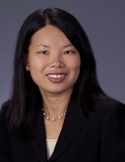 Pediatrician Jeannie Visootsak, Medical Director of the Down Syndrome Clinic in the School of Medicine’s Department of Human Genetics, received a “CATCH” (Community Access to Child Health) planning fund grant from the American Academy of Pediatrics. This grant supported her “CATCH Up with Down” program, which allowed the clinic to partner with birth hospitals, pediatricians, and the Down Syndrome Association of Atlanta to coordinate clinical services, education, and support to children with this disorder.
Pediatrician Jeannie Visootsak, Medical Director of the Down Syndrome Clinic in the School of Medicine’s Department of Human Genetics, received a “CATCH” (Community Access to Child Health) planning fund grant from the American Academy of Pediatrics. This grant supported her “CATCH Up with Down” program, which allowed the clinic to partner with birth hospitals, pediatricians, and the Down Syndrome Association of Atlanta to coordinate clinical services, education, and support to children with this disorder.
WHSC At-a-Glance Now at Your Fingertips
Do you need to know the number of employees in Emory Hospital, total alumni in the Nell Hodgson Woodruff School of Nursing or annual outpatient visits in The Emory Clinic? The 2007 At-a-Glance brochure, listing vital statistics on all components throughout the WHSC and including maps of WHSC and Emory Healthcare facilities, is available online at http://www.whsc.emory.edu/at_a_glance.cfm.
Upcoming Noteworthy Events
A presentation on “Protecting the Rights and Welfare of Human Research Subjects,” will be held on March 8, 7:00-8:30 p.m., in the Rita Ann Rollins Room of the Rollins School of Public Health. Dr. Robert J. Levine, co-chair of the executive committee of the Interdisciplinary Center for Bioethics at Yale University, will discuss how the field of human subject protection developed in response to public concerns and the role of researchers in protecting clinical trial subjects. This talk is co-sponsored by the Emory Center for Ethics, the Emory Clinical Trials Office, and the Emory/Fogarty Frameworks Program in Global Health.
Christine Tanner, RN, PhD, FAAN, will give the annual Hugh P. Davis lecture on “Best Practices in Nursing Curriculum” at 4:30 p.m., on March 8 in Case Study Room 101 in the nursing school. Dr. Tanner directs undergraduate programs at Oregon Health Sciences University.
Nobel Laureate Andrew Z. Fire will be the first speaker in a new Emory University lecture series: “Luminaries in Science,” at 3:00 p.m. in the WHSCAB auditorium on March 22. Dr. Fire is professor of pathology and genetics at Stanford and a member of the National Academy of Sciences. He shared a 2006 Nobel Prize with Craig C. Mello for their discovery of RNA interference—gene silencing by double-stranded RNA.
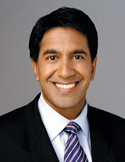 The WHSC is hosting Emory neurosurgeon and CNN medical correspondent Dr. Sanjay Gupta with a reception to celebrate the publication of his first book, Chasing Life. Dr. Gupta explores the quest for functional aging—extending a healthy and active life. He offers compelling stories of the most-up-to-date scientific breakthroughs from around the world, along with research and advice on how readers may halt the aging process.
The Emory community and general public are invited to join Dr. Gupta Wednesday, April 18, 6:30-8:00 p.m., at the Woodruff Health Sciences Center Administration Building. The event starts with a reception on the Plaza level and then moves to the auditorium for a presentation by Dr. Gupta, a short video clip of his upcoming special, and a question-and-answer opportunity. The evening culminates in a book-signing back on the WHSCAB Plaza.
The WHSC is hosting Emory neurosurgeon and CNN medical correspondent Dr. Sanjay Gupta with a reception to celebrate the publication of his first book, Chasing Life. Dr. Gupta explores the quest for functional aging—extending a healthy and active life. He offers compelling stories of the most-up-to-date scientific breakthroughs from around the world, along with research and advice on how readers may halt the aging process.
The Emory community and general public are invited to join Dr. Gupta Wednesday, April 18, 6:30-8:00 p.m., at the Woodruff Health Sciences Center Administration Building. The event starts with a reception on the Plaza level and then moves to the auditorium for a presentation by Dr. Gupta, a short video clip of his upcoming special, and a question-and-answer opportunity. The evening culminates in a book-signing back on the WHSCAB Plaza.
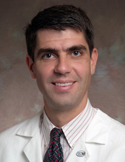 The Emory Voice Center, directed by Dr. Michael Johns III, and Emory Healthcare are sponsoring an inaugural celebration of World Voice Day on Saturday, April 14, at 6 p.m., at the Carter Center. Those who will be “sharing their voices” at the event include members of the Atlanta Opera, the Reverend Joseph Lowery (co-founder of the Southern Christian Leadership Conference), Speech (Grammy-winning hip-hop artist), and Panache (ensemble of the Atlanta Gay Men’s Choir). All ticket proceeds will support research at the Emory Voice Center. For more information, please call Emory HealthConnection at 404-778-7777.
The Emory Voice Center, directed by Dr. Michael Johns III, and Emory Healthcare are sponsoring an inaugural celebration of World Voice Day on Saturday, April 14, at 6 p.m., at the Carter Center. Those who will be “sharing their voices” at the event include members of the Atlanta Opera, the Reverend Joseph Lowery (co-founder of the Southern Christian Leadership Conference), Speech (Grammy-winning hip-hop artist), and Panache (ensemble of the Atlanta Gay Men’s Choir). All ticket proceeds will support research at the Emory Voice Center. For more information, please call Emory HealthConnection at 404-778-7777.
You have two ways to raise funds to support research on AIDS vaccines this May:
-
You can participate in or sponsor a runner in the Hope Springs Eternal 5K Fun Run for the Hope Clinic on May 19, starting at 9:00 a.m. at the main pavilion in Decatur Square. To register, visit www.active.com or www.rungeorgia.com (registration fee of $25 by May 15).
-
You can cycle or sponsor a cycler in the annual AIDS Vaccine Ride on May 19-20, 2007, in a ride from Atlanta to Camp Rock Eagle (75- and 100-mile options on both days). Funds raised support research in the Emory Vaccine Center. For more information, visit www.actioncycling.org or call 404-551-4893.
Sad Note
We were deeply saddened to hear last week of the death of Dr. Bruce Logue, who was known by many as the "father of cardiology" at Emory. He served on our faculty for more than four decades and was one of the founding partners of The Emory Clinic. He founded Emory’s first residency and fellowship programs in cardiology, co-edited early editions of Hurst’s The Heart, and was founding president of the Georgia Heart Association. Dr. Logue was truly a great man, and he will be greatly missed.
Leadership Thoughts
I mentioned earlier in this communication about my recent visit to Africa. While it was fun and adventurous to see the many beautiful animals, the rich species of flowers and vegetation, and other natural resources of that region, it was very humbling to witness first-hand the very difficult lives that most of the population experience each and every day.
To see men, women, and even children carrying large containers of goods balanced on their shoulders and on top of their heads was incredible. Witnessing this at 4 a.m. in the morning because they were headed to the market to buy, sell, and exchange goods was also deeply touching. These extremely hard working and dedicated people would seemingly have every right in the world to be frustrated and angry. A lack of clean drinking water, very little in the way of basic utilities, small and cramped living quarters, and many other unpleasant living conditions were all too often the norm for many of the people we saw. And yet, invariably we were greeted with warm smiles and gracious attitudes. Perhaps most heart-warming were the children. Children want to be happy, and they find joy in the simplest of activities. That is true no matter what continent you are on.
I mention all of this to ask you to do as I pledge to do more often – and that is to be thankful for what we consider the “little things." Clean water in abundance, lights that appear at the flick of a switch, ample roads and vehicles to navigate them, are just a few of the things we take for granted – and yet are not accessible to millions of people - not only in Africa, but in much of the world.
Our Emory Global Health initiatives take on a very special meaning once you realize how much needs to be done across the globe to provide basic health to so many in need. With all that you do in the Woodruff Health Sciences Center, we will make a difference in far away places all across the Earth.
May you all enjoy health and all the wonderful benefits we have so readily available.
Sincerely,
Michael M.E. Johns, MD
CEO, Woodruff Health Sciences Center